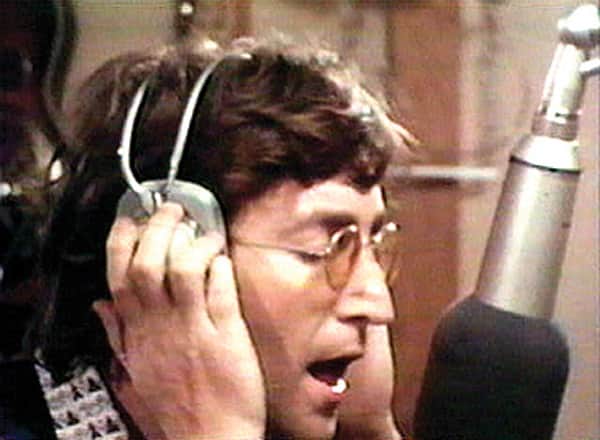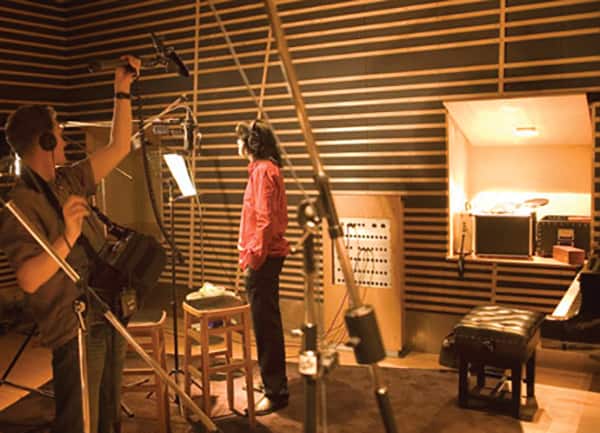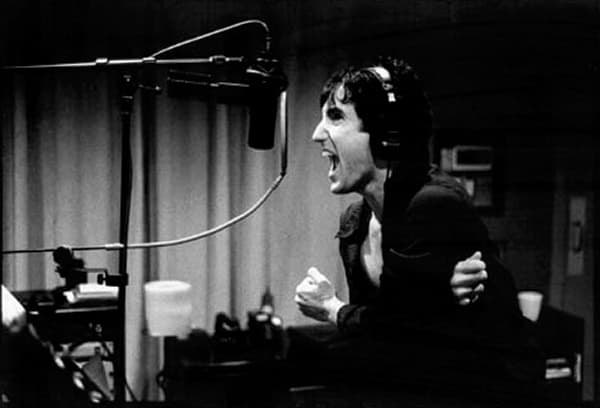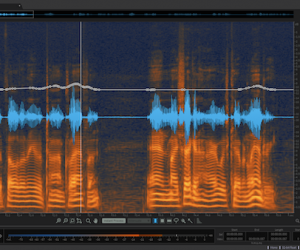Production Fundamentals: Vocals
Capturing vocals can be one of the most nerve-wracking aspects of a recording session – but it doesn’t have to be.
Text: Paul McKercher
If the eyes are the windows to the soul, the sung voice is surely the front door. Nothing stirs the spirit quite like a great vocal. The voice is a unique instrument, making sound without need of wood, strings, CPU, electricity or human hands. It’s above and beyond mere technology and there’s no doubt that a persuasive and tuneful voice can earn you a good deal of fame, fortune and influence with its power to weave spells on the masses.
To state that the vocal is the most important part of a record may not rest well with some but that doesn’t change the fact that most people (especially non-musicians) judge a record on the strength of the vocal, which makes our concern – the recording of it – not only the culmination of the recording process but the pivot upon which the success of a record often rests. Sounds scary but it needn’t be so.
Early in my career I dreaded recording vocals. I seemed to share the singer’s performance anxiety and found the event so stressful I would avoid it as best I could right up until virtually the end of a two- or three-week session. This would have to be the worst time to record most vocals, of course. With fatigue levels high and no flexibility left in the schedule, stress levels can go through the roof and threaten to turn the vocal session into a desperate dash, where the finishing of it becomes more important than the quality of it. Wherever feasible, I’ve since completely abandoned this approach by weaving the recording of vocals in and around other tasks, doing a bit every day and not turning it into some kind of final exam. At the same time I came to realise that it’s the singers – not the producers – that are judged on vocal performance, so there’s no real point getting too stressed over the process.
On the face of it, recording a vocal looks easy enough and, from a technical standpoint, is fairly simple, but it’s a measure of your musicality and people skills that will prove to be the difference between engineering a vocal and producing one. There’s no manual for that, so being a lover of lists I thought I’d pen anything I could muster that might help you smooth the process of recording the most important track in a song.
THE LIST
Make the headphone mix special. But don’t make it too loud as pitching gets tricky at high SPLs and headphone spill generally sounds terrible.
Leave enough headroom in the preamp. The voice has a large dynamic range and can easily provide peaks 10 to 20dB higher than its average volume. Turn a latter gain stage, like a compressor output or a fader, up a bit to compensate.
Don’t slam the compressor too hard, you can’t undo over-compression, and it will probably get squished in mixdown anyway, so long as it sounds reasonably consistent in volume through the headphone and monitor mix, you shouldn’t need ratios of more than 4:1.
Keep an eye on average levels to the DAW. Use a VU meter, if you have one, to gauge a true average. Some analogue gear can’t match the 14 to 16dB headroom above 0VU inherent within modern DAWs, and overly hot average levels may cause distortion in mic pre’s, consoles and compressors. A good average on a peak meter is (very roughly) two thirds up the scale.
Keep the signal path simple and hard patch around unnecessary channel faders, group faders or outboard. Less wire equals less noise. Less noise means more detail.
Keep the noise floor low. The vocal is an element that often gets heavily compressed and loud in a mix so any acoustic, mechanical or circuit noise will rise up and swallow low-level detail in other instruments. Tighten and weigh down mic stands and mount sensitive condensers in a cradle to minimise structural-borne noise. Use short cable runs where possible.
Document the signal path accurately for later recall. You never know when a lyric might get changed and a drop-in called for.



MIC CHOICE & PLACEMENT
A voice resonates from the mouth, face, head, neck and chest, so try a few different mic angles. A horizontal mic placement (looking straight at the mouth) seems to be a standard but a better tone might be achieved by the mic ‘hearing’ a bit more nose or chest. Varying the angle from the horizontal or even having it a little off axis may help tame a very bright voice, for instance. Consistent distance is important too. As the singer moves away from the mic the more the room is heard, particularly under heavy compression. That’s all good if it’s a nice-sounding room. But if it’s just a soundproof box, keep the vocalist within a hand-span of the mic and compress or gain-ride the loud bits.
The heart and soul of a voice is in the mids. The Fletcher-Mundsen curve shows us that our ears and minds pay more attention to mid frequencies as SPL decreases – something to do with catching the last cries of an ancestral cave-mate as he’s dragged off by a sabre-toothed tiger, I’m guessing; or perhaps it’s a primeval ability to hear juicy gossip across a crowded room at 20 paces… Regardless, the mic with the right mid flavour is the one to chose.
Alternatively, set two mics side by side. A cheap blues harp mic and a full bandwidth condenser is a favourite combination of mine. Less sensitive, band-reduced mics distort better than ‘all seeing’ condensers which get very raspy when distorted. With complimentary mics you have the best of both worlds – just be sure that they’re spatially aligned for good phase. As an added failsafe, print the two mics to separate tracks and inspect the waveforms to help align them perfectly. Punching a phase button on one signal will reveal exactly which frequencies, if any, are being cancelled.
WHEN
Let the singer warm up and don’t expect greatness straight away. Be casual and relaxed and let the singer sing until they’re comfy. Meet any headphone requests and secretly record everything. You never know when the muse will drop by.
Better still, do the vocal straight after you’ve laid down the bed when the voice is warm from doing guide tracks. Even better still, keep the guide track (which I always do anyway whether it’s good or not), it provides some useful musical clues and signposts.
singers – not producers – are judged on vocal performance, so there’s no real point getting too stressed over the process
HOW
Set the mood. Dim the lights. And while a rug, stool and a few plants are a good start… mirrors, webcam and a towel roadie… probably too much.
Memorise the lyrics or get a lyric sheet: it helps to understand and empathise with the song and makes cues and drop-ins easier.
Listen closely to everything and be decisive in sorting the wheat from the chaff, that way you can grade the good stuff. I keep notes as the singer performs – first impressions count for a lot – and grade the good sections with a three-tiered system of one to three ticks. I immediately delete takes that aren’t worth consideration and try to finish with three to five worthy takes, which I’ll then compile down to the final master.
Spread the singing across the entire schedule. Leaving all the vocals until the end is simply inviting disaster. I try to finish a song the same day I started it, or close to. There’s more fun and adventure to this than dutifully filling in gaps on a ‘to do’ chart, and, it seems to me, a more musical approach. To have songs finished early in a long session is a great morale boost and gives you a more accurate picture of your progress.
Avoid pitch correction. If the singer is flat or sharp, tell them. Remember, a vocalist that’s new to the studio may find it hard to pitch to headphones. One ear off can help, as can a tweak of the headphone mix. If all else fails have the singer perform to monitors in the control room using a mic with lots of rear rejection like a Shure SM87 – not ideal sonically but performance is more important than pristine sound. I don’t think I’m alone in finding the sound of pitch correction a huge turn-off. If you really have to use it, opt for manual mode and draw in the ‘correct’ pitch, and not just lots of straight lines – humans don’t do unwavering pitch.
Get some context into the studio monitors. Listening in solo is only for scrutiny of noise levels and any tonal or pitch judgements should be made within the framework of a realistic monitor mix. As always, listen deeply.
Doubling is a cool effect, but it has to be done right or don’t bother. Same goes for stacked parts which will sound like a footy chant unless you pay close attention to pitch, timing, emphasis, note length and pronunciation. Saying that, a backing vocal can be less well-annunciated than the lead and a great old trick is to strip the words of any consonants that are swamping or flamming with the lead vocal. So, for example, while the lead sings ‘the rain in Spain’, the backing goes with ‘the rain in ain’. The effect is increased intelligibility and tightness.
Give backing vocals a different sense of depth by recording them slightly further from the mic or on a different mic from the lead singer.
And here’s a great tip from Mark Punch via his brother Phil at Electric Avenue studios. If you want to record to tape first, then dump into a DAW but don’t have a sync device for slaving the DAW to time code on the tape, no matter. Say we’re recording a vocal; arm up two tracks on the DAW and one on the tape machine. Send the vocal to the tape machine and one track of the DAW, while sending the ‘off tape’ signal to the second track of the DAW. Now you can leave the tape machine in record and work on your DAW in the usual fast-finger-tapping manner, recording the direct signal and the tape-delayed signal simultaneously but not monitoring the latter. Once you’ve finished, shift the tape delayed track back into correct position using the direct track as a visual guide. The benefits being, you get the great sound of tape (if the machine is well aligned) without the slowness of tape transports winding back and forth, since you can let the tape machine run until the tape runs out, whereupon you rewind and roll again. You can use a two-track or a 24-track, it doesn’t matter. Even a cassette deck with a confidence head could be cool if you were after some serious crust. Until next time, send any questions, heckles, threats or good ideas to: paulmckercher@hotmail.com
















RESPONSES